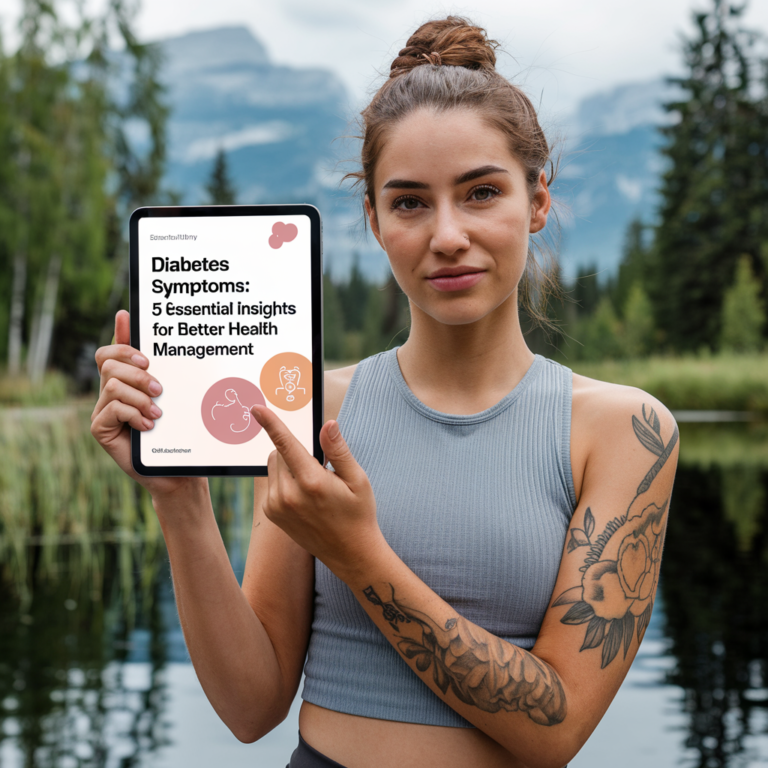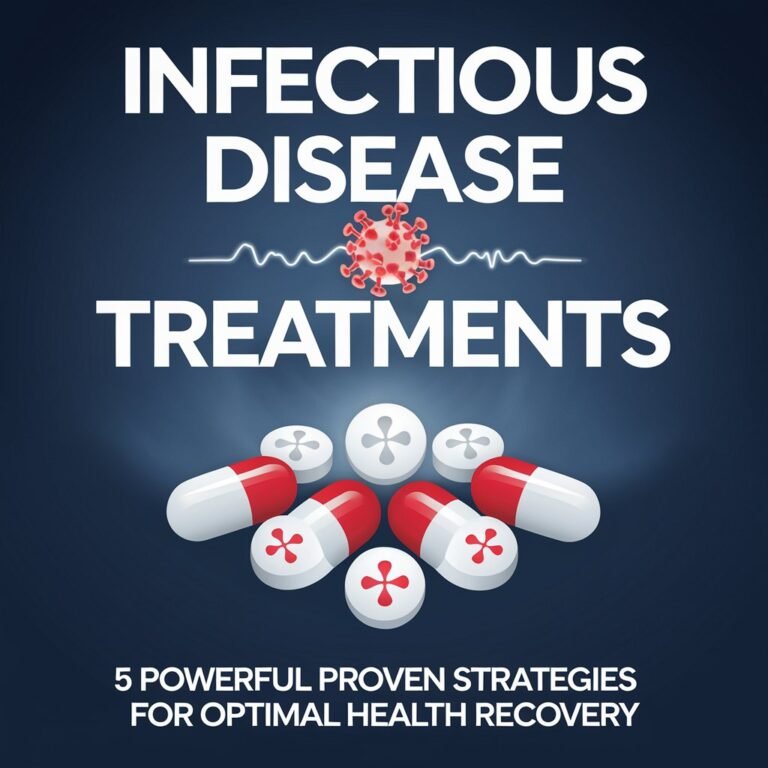
"Stay one step ahead of infectious diseases—learn the signs, symptoms, and prevention strategies today!"
Infectious diseases can manifest through a wide range of symptoms, depending on the type of pathogen involved, the severity of the infection, and individual factors such as age and overall health. Recognizing these symptoms early is crucial for effective diagnosis and treatment. In this article, we will explore the common symptoms associated with various infectious diseases, their significance, and when to seek medical attention.
What Are Symptoms?
Symptoms are the body’s signals indicating that something is wrong. They can be physical (like pain or fever) or psychological (such as anxiety). In the context of infectious diseases, symptoms arise as the body reacts to invading pathogens, triggering immune responses aimed at fighting off the infection.
Common Symptoms of Infectious Diseases

- Fever
- Description: A rise in body temperature, often a response to infection.
- Significance: Fever is a common symptom of many infectious diseases, including influenza, COVID-19, and bacterial infections. It indicates that the body is actively fighting off an infection. Learn more about fever from the CDC.
- When to Seek Help: If a fever exceeds 103°F (39.4°C) in adults or persists for several days, it’s important to consult a healthcare provider.
- Cough and Sore Throat
- Description: Coughing can be dry or productive (producing mucus), while a sore throat may feel scratchy or painful.
- Significance: These symptoms are often associated with respiratory infections, such as the common cold, bronchitis, and pneumonia. They may also appear in viral infections like COVID-19. For further information, visit the CDC’s page on respiratory infections.
- When to Seek Help: If symptoms persist beyond a week or worsen, especially with difficulty breathing, seek medical attention.
- Fatigue
- Description: A feeling of extreme tiredness or lack of energy.
- Significance: Fatigue can be a sign of various infections, including mononucleosis and viral hepatitis. It reflects the body’s energy being redirected to fight the infection. Read more about fatigue in infectious diseases from the Mayo Clinic.
- When to Seek Help: If fatigue is severe and accompanied by other concerning symptoms, consult a healthcare provider.
- Muscle and Joint Pain
- Description: Discomfort in muscles or joints, ranging from mild soreness to severe pain.
- Significance: These symptoms can occur in infections like influenza, COVID-19, and Lyme disease. They indicate inflammation and the body’s response to infection. For more details, check the CDC’s information on Lyme disease.
- When to Seek Help: If pain is persistent or severe, especially with swelling or fever, it’s advisable to seek medical advice.
- Gastrointestinal Symptoms
- Description: Symptoms such as nausea, vomiting, diarrhea, or abdominal pain.
- Significance: Gastrointestinal symptoms are common in foodborne illnesses (like Salmonella) and viral infections (such as norovirus). They can lead to dehydration if not managed properly. Learn more about foodborne illnesses at the CDC.
- When to Seek Help: If diarrhea lasts more than 48 hours or is accompanied by high fever or severe dehydration, seek medical attention.
- Rashes or Skin Lesions
- Description: Changes in skin appearance, including redness, swelling, or blisters.
- Significance: Rashes can occur in various infectious diseases, including chickenpox, measles, and Lyme disease. They may indicate an immune response or the presence of the pathogen. For information on skin rashes, visit the American Academy of Dermatology.
- When to Seek Help: If a rash spreads rapidly, is painful, or is accompanied by fever, seek medical advice.
- Chills and Sweats
- Description: Episodes of feeling cold followed by excessive sweating.
- Significance: These symptoms are often associated with infections like malaria or sepsis. They can indicate the body’s struggle with a serious infection. For more on chills and sweats, visit the CDC’s malaria page.
- When to Seek Help: Persistent chills or sweats, especially with fever, warrant medical evaluation.
- Respiratory Symptoms
- Description: Includes shortness of breath, wheezing, or chest tightness.
- Significance: Respiratory symptoms can indicate serious conditions like pneumonia or COVID-19. They require immediate attention if they worsen. Learn more about respiratory symptoms from the CDC.
- When to Seek Help: Seek emergency care if you experience severe shortness of breath or chest pain.
When to Seek Medical Attention

Recognizing when to seek medical help is vital in managing infectious diseases. Consider the following guidelines:
- Persistent Symptoms: If symptoms last longer than expected or worsen.
- High Fever: A fever over 103°F (39.4°C) or persistent fever.
- Severe Symptoms: Intense pain, difficulty breathing, or confusion.
- Signs of Dehydration: Dry mouth, decreased urination, or dizziness.
- Underlying Health Conditions: Individuals with chronic health issues should seek medical advice sooner if they exhibit any concerning symptoms.
Conclusion
Understanding the symptoms of infectious diseases is essential for early detection and effective treatment. Recognizing these signs can empower individuals to take appropriate action and seek medical help when necessary. If you experience any concerning symptoms, don’t hesitate to consult a healthcare professional. Early intervention can make a significant difference in outcomes, ensuring that you stay healthy and safe.
Meta Description
Explore the common symptoms of infectious diseases, from fever and cough to gastrointestinal issues. Learn when to seek medical attention for effective diagnosis and treatment.
“FAQs: Understanding Infectious Diseases and Their Symptoms”
1. What are the most common symptoms of infectious diseases?
Common symptoms of infectious diseases include fever, cough, sore throat, fatigue, muscle and joint pain, gastrointestinal issues (such as nausea and diarrhea), skin rashes, chills, and respiratory symptoms. The specific symptoms can vary depending on the type of infection.
2. When should I seek medical attention for symptoms of an infectious disease?
You should seek medical attention if you experience persistent symptoms that last longer than expected, a high fever over 103°F (39.4°C), severe pain, difficulty breathing, confusion, or signs of dehydration such as dry mouth and dizziness. Individuals with chronic health conditions should also seek help sooner if they exhibit concerning symptoms.
3. How can I prevent the spread of infectious diseases?
Preventing the spread of infectious diseases involves practicing good hygiene, such as regular handwashing with soap and water, using hand sanitizer, getting vaccinated, practicing safe food handling, and avoiding close contact with sick individuals. Staying informed about outbreaks and following public health guidelines can also help.
4. Are all infectious diseases contagious?
No, not all infectious diseases are contagious. Some diseases, like the flu and COVID-19, can spread from person to person, while others, such as tetanus or Lyme disease, are not transmitted between individuals but through vectors like insects or contaminated surfaces.
5. How are infectious diseases diagnosed?
Infectious diseases are diagnosed through a combination of medical history, physical examinations, and laboratory tests. Healthcare providers may perform blood tests, cultures, imaging studies, or other diagnostic procedures to identify the specific pathogen causing the infection.






